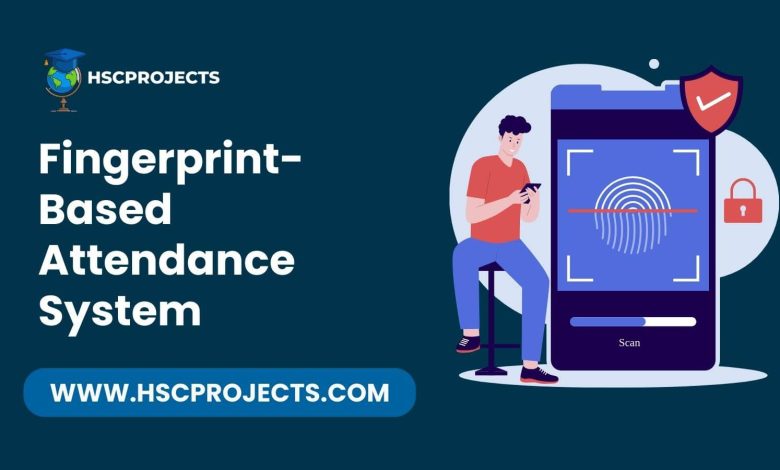
Fingerprint-Based Attendance System
Introduction
Attendance tracking in educational institutions has always been a cumbersome process. Traditional methods like roll calls or sign-in sheets are not only time-consuming but also prone to errors and fraud. Enter the Fingerprint Attendance System—a groundbreaking solution that leverages biometric technology to streamline student attendance.

How It Works
The system employs a fingerprint reader to scan and identify the unique fingerprint patterns of each student. Upon successful identification, the system automatically marks the student as present. This data is then stored in a secure database, allowing for easy retrieval and report generation.
- Fingerprint Reader: The cornerstone of the system, used for scanning fingerprints.
- Database: Stores the fingerprint data and attendance records.
- Report Generation: Allows for subject-wise or date-wise attendance reports.
- Defaulter List: The system can generate a list of students who have low attendance.
Advantages
- Authenticity: The uniqueness of fingerprints eliminates the possibility of proxy attendance.
- Efficiency: Teachers can save approximately 15 minutes per hour usually spent on taking attendance.
- Record-Keeping: Eliminates the need for physical attendance sheets, as all data is electronically stored.
- Accountability: Easy identification of defaulters.
- Accessibility: Users can quickly access the attendance history of any student.
Disadvantages
The primary limitation is the requirement for a fingerprint reader in each classroom, which could be a significant initial investment.
Future Scope
While the current focus is on student attendance, the system has the potential to be adapted for teaching staff, thereby creating a unified attendance management system for the entire institution.
Conclusion
The Fingerprint Attendance System is a revolutionary step in automating and streamlining the attendance process in educational settings. By adopting this technology, institutions can save time, reduce errors, and focus more on the educational experience.
Hardware Requirements
- Arduino Uno or compatible board
- Fingerprint Sensor (e.g., Adafruit or similar)
- Serial Monitor or LCD for display
Software Requirements
- Arduino IDE
- Adafruit Fingerprint Sensor Library
Sample Code
#include <Adafruit_Fingerprint.h>
#include <SoftwareSerial.h>
SoftwareSerial mySerial(2, 3); // RX, TX
Adafruit_Fingerprint finger = Adafruit_Fingerprint(&mySerial);
void setup()
{
Serial.begin(9600);
Serial.println("Fingerprint Attendance System");
finger.begin(57600);
if (finger.verifyPassword()) {
Serial.println("Sensor Found");
} else {
Serial.println("Sensor Not Found");
while (1);
}
finger.getTemplateCount();
Serial.print("Stored Templates: "); Serial.println(finger.templateCount);
}
void loop()
{
getFingerprintID();
delay(50);
}
uint8_t getFingerprintID() {
uint8_t p = finger.getImage();
if (p != FINGERPRINT_OK) return -1;
p = finger.image2Tz();
if (p != FINGERPRINT_OK) return -1;
p = finger.fingerFastSearch();
if (p != FINGERPRINT_OK) return -1;
// Attendance logic here
// For example, mark the student as present in your database
Serial.print("Student ID: "); Serial.println(finger.fingerID);
return finger.fingerID;
}
Steps to Run the Code
- Connect the fingerprint sensor to the Arduino board.
- Install the Adafruit Fingerprint Sensor Library via Arduino IDE.
- Upload the code to the Arduino board.
- Open the Serial Monitor to see the output.
In order to download the PDF, You must follow on Youtube. Once done, Click on Submit
Subscribed? Click on Confirm
Download Fingerprint-Based Attendance System PDF






